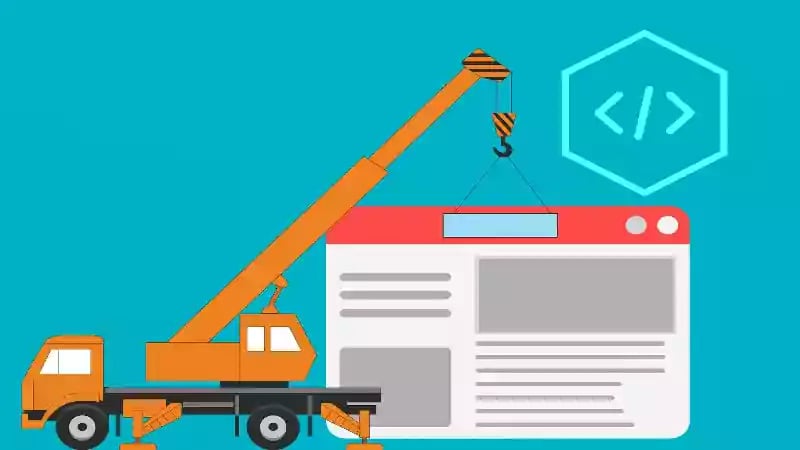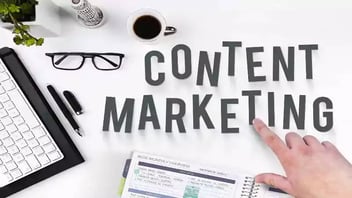Propulsez votre contenu avec HubSpot Marketing Hub. Stratégies et outils pour booster votre réussite.
9 types de pages d'atterrissage pour l'Inbound Marketing
La simple page d'atterrissage est souvent décriée, mais apparemment jamais vraiment comprise. Il existe techniquement autant de pages d'atterrissage qu'il y a de raisons de les utiliser. Pour dissiper une partie du mystère qui entoure ces puissants outils de marketing, voici un tour d'horizon des 9 variétés les plus répandues aujourd'hui, classées par ordre de priorité.

En matière de marketing numérique, les pages d'atterrissage constituent le noyau du contenu de votre site web. Une page contient une pléthore de mots-clés, de liens et d'informations, conçus pour stimuler le référencement de votre site web et éduquer les visiteurs. Cela dit, lorsque vous créez une page d'atterrissage, il est important d'examiner les options qui s'offrent à vous et de choisir le format qui répond le mieux à vos besoins.
1) La Squeeze Page
Terme quelque peu archaïque, la squeeze page est ce que la plupart d'entre vous ont imaginé en lisant le titre de cet article. Il s'agit d'une page d'atterrissage à usage général où l'on demande au lecteur une information (généralement une adresse e-mail) en échange d'un contenu exclusif (souvent un ebook ou un livre blanc).
Le nom "squeeze page" vient du fait que le visiteur de la page est pressé d'obtenir des informations. C'est pourquoi nous pensons que ce nom est dépassé. Actuellement, ces pages sont souvent appelées" pages de téléchargement de contenu " ou " pages de formulaire de contact", car l'objectif de l'entreprise est de collecter des informations de contact en échange d'un élément de contenu.
2) La page de clic
Il s'agit d'une page d'atterrissage qui ne demande aucune information. Généralement utilisée dans les campagnes de médias sociaux, une page de clic offre des informations supplémentaires sur le sujet qui a incité l'utilisateur à cliquer en premier lieu. L'utilisateur verra ensuite un CTA qui le conduira plus loin dans l'entonnoir de vente.
Par exemple, les pages à cliquer sont idéales pour développer les informations fournies dans un post Facebook. Une fois que le lecteur a cliqué sur le message et est arrivé sur votre site, cette page l'incite à approfondir le sujet en le dirigeant vers une page de téléchargement, une page de vente ou une page de contact (voir ci-dessous) pour qu'il poursuive son voyage.
3) Page de capture de prospects
Semblable à une page d'incitation, mais plus étoffée. Les pages de capture de prospects sont utilisées de la même manière que les pages d'incitation, mais avec un petit quelque chose en plus. Ces pages demandent plus d'informations au visiteur et, en échange, proposent un contenu plus approfondi. Au lieu d'une simple adresse électronique pour le transfert d'un livre électronique, une page de capture de prospects peut demander 8 à 12 champs d'informations de contact en échange d'une consultation individuelle ou d'une démonstration.
Ces pages sont conçues à un stade plus avancé de l'entonnoir de vente, lorsque le visiteur a dépassé le stade de la prise de conscience et se trouve entre la considération et l'achat. La clé d'une utilisation réussie des pages de capture de prospects est de savoir ce qu'il faut demander et ce qu'il faut offrir. Ne demandez pas plus qu'un nom et une adresse électronique pour un livre électronique. Les livres blancs peuvent exiger un peu plus, soit 4 à 8 champs (nom, courriel, nom de l'entreprise, rôle dans l'entreprise, etc.) Les démonstrations ou les appels vidéo peuvent nécessiter une biographie complète de 8 à 12 champs, y compris des éléments tels que le budget proposé et la personne qui a le pouvoir d'achat.
4) Page de désabonnement
Personne n'aime en parler, mais c'est essentiel. La présence d'un lien de désabonnement facile à trouver dans toutes vos communications par courrier électronique peut augmenter votre taux d'ouverture, car les destinataires savent qu'il leur sera facile de quitter la liste s'ils le souhaitent. En outre, le fait que ce lien renvoie à une page de désabonnement propre et discrète, avec une navigation minimale vers d'autres parties du site, leur montrera que vous respectez leur décision de quitter votre liste, mais que vous appréciez également qu'ils restent dans les parages et lisent d'autres contenus.
5) Page de vente
Également appelées "pages d'atterrissage à contenu long" ou "pages d'atterrissage à contenu long", c'est sur ces pages que vos talents de rédacteur seront mis à l'épreuve. Ces pages sont riches en contenu sans être des murs de texte. Elles sont conçues pour faire passer un client potentiel de l'étape de la considération à celle de l'achat. C'est pourquoi les CTA seront passés de "télécharger maintenant" à "acheter maintenant" ou "acheter ici". Il s'agit de pages situées en bas de l'entonnoir, qui doivent donc contenir votre texte le plus convaincant.
6) Page d'erreur 404
Oui, techniquement, ce sont des pages d'atterrissage. Ce sont des pages d'atterrissage qui reconnaissent le simple fait que des choses se produisent. Qu'une page ait été déplacée et que le lien doive être mis à jour, ou que le visiteur ait mal saisi ou tronqué une URL, ces pages doivent contenir des informations spécifiques pour éviter que le visiteur ne se désintéresse du site. Restez dans la voix de la marque tout en reconnaissant que quelque chose a dérapé, puis proposez des liens vers d'autres pages pertinentes et rassurez votre public en lui disant que le problème sera résolu.
A découvrir également: cet article
7) Page "Coming Soon
Aucune règle ne dit que les entreprises qui n'ont pas encore été officiellement lancées ne peuvent pas avoir de superbes sites web. Pour créer des liens vers ces sites à partir des médias sociaux et des courriels, il faut créer une page "coming soon". Encore une fois, la clé est de rester dans la voix de la marque afin que les visiteurs puissent commencer à s'habituer à votre style et que vous puissiez faire savoir à tout le monde que votre super gadget sera bientôt disponible. Proposez votre proposition de valeur et un CTA pour un accès anticipé ou une autre offre tout aussi exclusive afin d'inciter les visiteurs à se convertir sur-le-champ. N'oubliez pas que l'exclusivité fait vendre.
8) Page "À propos de nous
Plus qu'une simple page de site du même nom, ces pages d'atterrissage sont fantastiques pour les campagnes générales de sensibilisation à la marque et les messages sur les médias sociaux qui ne sont pas liés à un produit ou un service spécifique. Ces pages vous permettent d'envoyer les internautes à un endroit du domaine où ils peuvent commencer à en apprendre davantage sur votre entreprise et vos produits, et peuvent inclure des CTA pour des abonnements à des courriels, des livres électroniques ou "plus d'informations".
9) Pages piliers/groupes de contenu
Ces pages sont un bonus, car elles ne servent pas uniquement de page d'atterrissage. La page pilier est une page riche en contenu qui approfondit un sujet sur lequel vous avez écrit sur le blog ou que vous avez diffusé sur les médias sociaux. Il s'agit d'une page vers laquelle renvoyer à partir de ces articles et qui fournit une page pratique vers laquelle renvoyer à partir de chaque article. Elle peut également inclure plusieurs CTA pour des livres électroniques, des livres blancs, des leçons vidéo, etc. Une page pilier est un élément essentiel d'une stratégie d'Inbound Marketing réussie.
Elle crée ce que Google appelle des "groupes de sujets" ou des "groupes de contenu", ce qui accroît l'autorité de votre site auprès du moteur de recherche. Une page pilier peut donc servir de mine d'or pour le référencement. L'algorithme de Google accorde une certaine importance aux sites considérés comme faisant autorité, de sorte que la création d'un groupe thématique autour de votre créneau ou de votre secteur d'activité peut avoir un effet positif sur votre site.
Ce contenu est disponible en:
- Allemand: 9 verschiedene Arten von Landing Pages für Inbound Marketing
- Anglais: 9 Different Types of Landing Pages for Inbound Marketing
- Espagnol: 9 tipos de páginas de aterrizaje para Inbound Marketing
- Italien: 9 diversi tipi di landing page per l'inbound marketing
- Roumain: 9 tipuri diferite de pagini de destinație pentru Inbound Marketing
- Chinois: 9 种不同类型的入站营销着陆页











Commentez ci-dessous